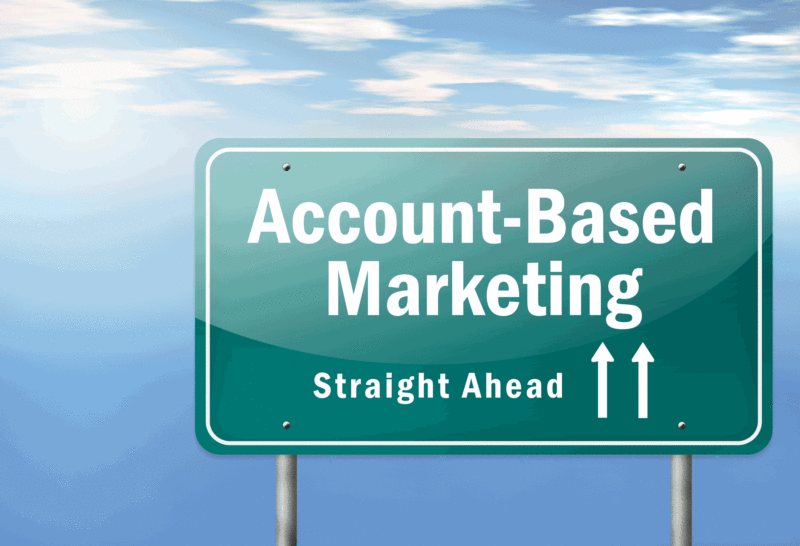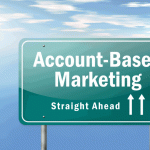Lessons from the front lines: How Dun & Bradstreet’s CMO cultivated an account-based approach
Contributor Jared Dodson sits down with CMO Rishi Dave to talk about the challenges and opportunities of Account-Based Marketing and where he sees ABM going.
 Dun & Bradstreet CMO Rishi Dave has developed a unique perspective as both a practitioner of account-based marketing (ABM) strategies and a provider of ABM solutions. Dun & Bradstreet, a provider of business data solutions for account-based marketers and other professionals, helps organizations build stronger relationships with its customers through the power of better data.
Dun & Bradstreet CMO Rishi Dave has developed a unique perspective as both a practitioner of account-based marketing (ABM) strategies and a provider of ABM solutions. Dun & Bradstreet, a provider of business data solutions for account-based marketers and other professionals, helps organizations build stronger relationships with its customers through the power of better data.
Since joining Dun & Bradstreet three years ago, Dave has led an internal modernization of the marketing organization, including pushing his teams to partner with sales and product teams and go to market with an account-based approach.
He recently shared his views and critical lessons learned with me. Following are highlights from our discussion:

D&B CMO Rishi Dave
Q: As you adopted an ABM approach, what surprised you from looking at account analytics?
What surprised us most from looking at the analytics was how much opportunity there was in existing accounts where we were just selling one line of business. We discovered there was also a very high propensity for additional lines of business within those accounts.
We also found that there are significant growth opportunities in accounts that may not appear to be that attractive based solely on the firmographics (size, industry, growth rate, etc.). Investing in data and analytics has allowed us to get much more scientific where it makes sense, from a cost and ROI (return on investment) perspective and has allowed marketing to be heavily involved in ways you may not expect.
We often think of this as an ABM data and analytics “stack.” The first layer is the data you already have (your own customer data or existing third-party data) cleaned and integrated leveraging master data — you can do a lot with this.
The second layer is building analytics which help determine which accounts to prioritize. The final layer consists of analytics solutions integrated and delivered within existing marketing and sales platforms (like Customer Relationship Management or marketing automation) which enable real-time account-based marketing campaigns and sales plays.
Q: You mention that, where it makes sense, marketing is heavily involved in ways we may not expect. What are some examples of this?
If you look at our larger accounts that have a high propensity to buy a particular line of business, marketing will actually go into those accounts and do more than field marketing; they’ll go in and build customized programs, participate in joint social selling (with the joint social network of marketing and sales), and help build ROI models and other personalized materials that help the sales team close.
Q: What did you learn from piloting ABM that you would now do differently?
The key learning for us was how important the sales and marketing partnership was, in terms of working with the sales team to both pick the right accounts and then engage those prioritized accounts. We found that for ABM to be successful, it’s more than just sales and marketing saying, “Oh, we get along.” When it is done well, you don’t really know where sales starts and marketing ends.
We’ve even gone as far as measuring our marketing team against closed sales, not just pipeline, because pipeline doesn’t pay the bills — sales does. Doing this creates the ultimate sales and marketing alignment. We also found that starting small with five to 15 accounts and then scaling were key success factors.
Q: Marketers who use ABM often measure success in terms of engagement metrics, but you mentioned that you focus on closed sales. Can you expand on this?
I know there’s a lot of talk in the ABM world around engagement as a way to measure, and I think that’s really good early on. Ultimately, though, when you talk about how to really scale a program and convince people that it works, looking at pipeline metrics, account sales growth and close rates is really critical.
We also look at what those metrics are when marketing is involved, versus when marketing isn’t involved, to get a better idea of the impact of our ABM efforts.
Q: You’ve talked about how you need to change the relationship with sales, but what about within marketing? Do you need new types of marketing skills to run ABM effectively? Do you need to change the workflows of the teams significantly?
We all talk nowadays about how we need marketers that are, to some degree, specialists — whether it’s marketing technology, creative, analytics, digital, messaging, etc. The challenge when you have an ABM approach is that if you put those experts in place, without putting the right processes around them, they’ll more or less work in those silos because that’s where their expertise is.
One thing we ended up doing was creating this concept we call “tiger teams,” which are groups of specialists from across all the different disciplines working together and jointly measured to drive programs for a particular customer persona. We learned to do this early on to ensure that the accounts we’re targeting are not receiving disjointed experiences as they’re progressing to close.
It took a while to get it to hum, but I think that orientation around personas was very critical to our success because it allowed us to think from a customer perspective backward versus a siloed perspective.
Q: Have you had a client that did an ABM pilot you supported where you were surprised by how quickly they adopted ABM and saw success from it, even if they weren’t a tech company or traditional early adopter?
Yeah, definitely! There was a customer in the financial services industry who was a small, regional bank. The company was essentially going against the big, huge banks. One of the things that the company realized was that they wouldn’t be able to differentiate on scale and cost, but they could differentiate on customer experience.
We pulled all the data together that gave this financial services company a differential understanding of the opportunity with certain customer groups. They were then able to target accounts that the larger banks may not focus on and provide that more tailored service. That was a game-changer for them.
Q: As you started shifting to an account-based approach, how did you think about allocating budget to support the new strategy?
At a macro level, we pulled a lot of dollars from more broad-based programs as well as from high-level branding plays, and moved them to more targeted approaches across the board. At a micro level, determining the mix of spend depends on the experience that you think makes sense for a specific account. Generally, we have a playbook of ABM tactics and dial those up or down for specific accounts.
Q: Where do you see ABM going? Is this a fad, or is this here to stay?
I don’t even know if ABM is “a thing.” It’s how we do B2B marketing because — like other B2B companies — we want to focus our budgets on the highest ROI approaches.
We use our analytics, we prioritize accounts, we look at propensities, and we go after accounts to varying degrees based on all that data. We don’t think of it as a distinct tactic; this is just how we think about marketing.
Q: As more marketers begin to adopt ABM, what challenges should we expect over the next 12 to 18 months?
I think the big challenge is going to be around the customer experience piece. You have the analytics, you have the prioritization, you have the focus — now what specific experience do you architect so that customers stay with you as they progress?
A lot of that is, obviously, making sure you can pull everything off correctly, but it’s also the creative element of what content to use and how to make it resonate with each account. I think that’s going to be the big focus once ABM becomes a more normal thing. And a big part of that is really understanding the customer, which I don’t think most companies do to the level they need to.
Some opinions expressed in this article may be those of a guest author and not necessarily Marketing Land. Staff authors are listed here.
Marketing Land – Internet Marketing News, Strategies & Tips
(36)







